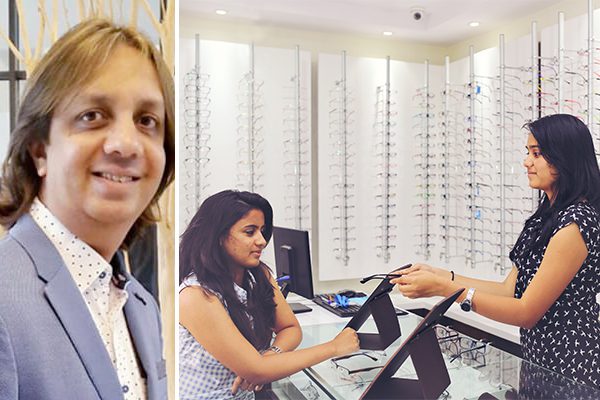
Time For Paradigm Shift In Indian Optical Trade?
Pragnesh Gangar shares his views on whether the Indian optical industry has joined the movement to shift focus from the product oriented Eyewear to experience oriented Eyecare
From embracing the new norms of masking, social distancing and sanitising to the accelerated digitisation, the pandemic has many positives-even for the optical trade. India’s eyewear industry grew, evolved and expanded its footprint over the last decade until the pandemic hit. This growth was a result of a number of factors such as funding from external parties and modernisation entering the industry coupled with the rising demand for eyewear in terms of sales volume.
A storm in the calm
The emerging technologies and changing fashion trends, consumer lifestyles, choices and preferences have turned tables on the family-owned eyewear businesses. But this is not the paradigm shift that is causing a storm in the calm. Rather it is the proposed change in business atmosphere being suggested by some of the big names in the industry.
The core thought that seems to be doing the rounds is - What if the business approach focuses on reframing the Eyecare as a necessity instead of just another need? What if the eyewear retailers adopt a Care before Cure approach? Will it help traditional opticians to reclaim their title as the coveted care heros?
Two sides of a coin
At first interpretation, this thought does sound good. But when you dig deeper - both sides of the coin become clear. And like every idea, this shift also has various aspects.
The uptick for traditional opticians
While the industry itself grew, the traditional opticians and family-owned optical businesses have suffered. The funded optical businesses and modern retail brought in scale, range, reach and choice in terms of eyewear brands, products and accessories.
This has led to the traditional family owned businesses taking a backseat.However, the care before cure approach could be the game changer for the traditional opticians.
Here is how:
- Traditional opticians have the experience and the expertise. They may have an upper hand in pioneering the care before cure approach.
- They have also focused on a solutions driven method to address customer concerns. Hence they may be better equipped to handle this shift.
- The post pandemic customer is going to ask more questions and look for a personalised eyewear shopping experience. The traditional opticians get a head start in this segment as they have always believed in patiently addressing customer concerns before prescribing the closest-to-perfect solution.
From these advantages, it sure means that traditional opticians could be the torchbearers that will catalyse the proposed paradigm shift. Let’s not forget that the traditional family-owned opticians bring on board experience and expertise that the relatively young entrants lack.
But the road ahead is not easy. The traditional opticians will need to invest more in improving their technical capabilities and matching pace with the modern day customers.

The positives of funded retail chains
The funded retail chains may be relatively new entrants in the optical trade. But let's not forget that they are fast learners. They came in late but were quick to learn the tricks of the trade and today claim a fair share of the market.
How did they do this? Well, for starters, their sale focused approach led them to introduce several advancements in the eyewear retail space. From latest products to fancy lenses and presence on social media platforms, the funded retail chains focus on reaching out to the customer in as many ways as possible.
For instance, the presence on social media allows them to connect with the tech savvy crowd, share updates and at the same time improve awareness. They gradually build their communities of customers through social media. One may think that their sales driven approach is questionable but their hunger to grow has led to the overall development of the optical trade. Even the traditional opticians are taking a cue from their growth story and venturing into tech savvy initiatives.
The catalyst
Another interesting innovation that could catalyse the paradigm shift is the introduction of wearable vision devices. Thanks to technological advancements in eyewear, we have the opportunity and ability to create innovative products that focus on both improving vision and augmenting our reality.
This is the age of Wearable artificial vision devices. A wearable artificial vision device incorporates cameras into eyewear. There are wearable devices where the camera analyzes what the user is looking at and then “reads” what it is seeing back to the user via a small earpiece. In other variants, high-definition cameras project images from a person’s surroundings to the eyewear lenses, magnifying objects and texts. Some of these variants are still a work in progress. But the wheels are already rolling and they will arrive in the market soon.
Given the proposed shift of positioning eyewear as a necessity and not just a need, the eyewear retailers need to focus more on proposing lifestyle based solutions to their customers. This would mean that wearable vision devices will take the centre stage very soon. The customer will ask for cool new wearables which can become lifestyle accessories and style statements for adults, pre teens and children.
Unity is the key?
In order for the shift to happen, the optician attending to the customer needs to be empowered with knowledge on products, technologies, empathy building, access to rich analytics, upskilling and a lot more. This also calls for more investments in the lab infrastructure. However, instead of looking at it as an opportunity to become individual heros, the traditional opticians and the funded retail chain owners should join hands to bring about the next revolution in the eyewear industry.






